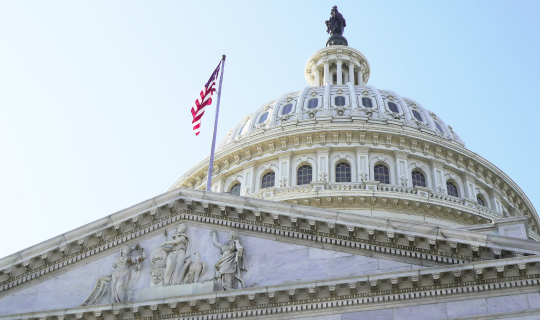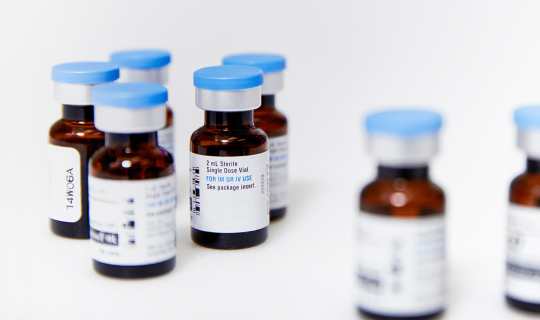Alternate site infusion landscape: Q&A with AmerisourceBergen infusion experts
By AmerisourceBergen
TONI GIGLIO: Dan, you're coming from a large health system background, and Justin comes from a background in private equity/venture capital-funded independent specialty infusion. You both bring different perspectives to this issue. What do you think about where this has led us to where we are today?
JUSTIN WHITSETT: There are new and innovative service lines that continue to be developed to meet patients where they are as new drugs hit the market. Currently, the market is dominated by the non-payor associated providers, this creates an opportunity to invest in the specialty infusion market outside of the health systems. I think it's important for health systems to find out where the investment dollars are going and mimic those service lines. There's a need for health systems to meet the market where it is.
DAN TEICH: Hospitals and health systems have always relied on their hospital-based infusion centers, particularly for specialty infusion. As we continue to monitor movement in this market, and as Justin said the market disruptors, we are witness to the money that is flowing in from private equity and VC funding – well, the health systems need to change. Manufacturers are noticing this. Obviously, payers are noticing this. The health system infusion center has continued to be the highest cost infusion provider from a health plan standpoint. It really boils down to the health systems needing to develop a strategy to address this incursion into their historical spaces.
GIGLIO: How is the patient experience being affected by these changes and shifts in the market?
TEICH: Going through our societal transformation with COVID we've learned that patients want to receive care differently. Many want to receive care in their home, especially patients on specialty therapies who are immunocompromised. A lot of the market is shifting to single-level ambulatory infusion centers where the patient can enter without having to deal with elevators or parking ramps. In the case of home infusion, patients can receive care without having to take a day off work. So really it revolves around convenience. Additionally, since biologic and specialty therapies have been around now for a relatively long time, in terms of monitoring infusion reactions, some of the perceived safety risks of not having patients under direct hospital care are eroding and teams are trained to manage reactions outside of a hospital setting.
GIGLIO: Justin, based on your experience, how does the patient fit in with non-health system providers?
WHITSETT: The entire industry was really built around meeting patient needs, administering therapies outside the hospital setting. That's where alternate, specialty, or home infusion markets were born. The private equity, independent, and local pharmacy providers have done an excellent job in meeting patient needs, addressing some of the issues as far as accessibility and mobility -- some in the independent pharmacy space will regularly arrange transportation for patients. They also look at unique ways to administer therapies so that it's convenient for patients when they travel or if they're visiting from out of town. There's a lot of creative answers that hospitals should consider when asking what should we be doing and what should we do differently if we're going to meet our patients' needs.
At AmerisourceBergen we have the privilege of speaking with our customers across the United States in health systems of all sizes. We're hearing that they're taking financial hits from the loss of patients, experiencing attrition based on different market forces. Our infusion strategy solution is a way for them to recapture some of that revenue that has left the health system ecosystem as well as expand services and backfill some of the lost revenue that they don't anticipate coming back. It's an expansion of services that will continue to bring revenue to the health system, while at the same time meeting patient needs and they aren't lost to local providers because health systems don't have similar service lines to offer.
GIGLIO: Why did we decide to invest in building an infusion strategy solution for health systems and how do you think this will continue to evolve for us at AmerisourceBergen?
TEICH: The pie in this market, if you will, is big enough for everyone from your community practice providers to your physician-based infusion centers. We're focused on enabling patients who seek care at a health system get the best access to the drugs and products and services available, in the most affordable and convenient manner, by helping our health systems build these models around the patient care experience.
It's important to note that the infusion therapy pipeline continues to be very robust. Most drugs start out in an injectable or infusible form first, particularly in the drug development pipeline. As that pipeline continues to build again, that pie continues to expand. If we operationalize these patient-centric experiences through pharmacy, we all can win.
WHITSETT: The core idea of infusion strategy is continuity of care, ensuring that a patient who is seeking care within a health system can stay in that health system. And for the providers within that health system to be able to continue to monitor and directly provide for the needs of the patient throughout the duration and resolution of their acute disease, or the successful maintenance of a chronic condition. Our strategy is designed around meeting patient infusion needs as quickly as possible based on the resources available within a health system.
For more information, visit AmerisourceBergen's Infusion Strategy webpage.
Toni Giglio is National Vice President, Payer and Infusion Solutions, AmerisourceBergen.
Dan Teich is VP, Performance Based Contracting, AmerisourceBergen.
Justin Whitsett is Senior Director - Portfolio Solution, Infusion, AmerisourceBergen



